In the first two parts of this series, we looked at the history of ultra thin watches – how they gradually evolved, and how, as watchmaking progressed, watches started to become so thin that they began to reach certain physical limits. In this third installment, we'll look at two modern watches by Audemars Piguet and Piaget, and see where ultra thin watches might go from here, as watchmakers continue to wage their micron-scale war.
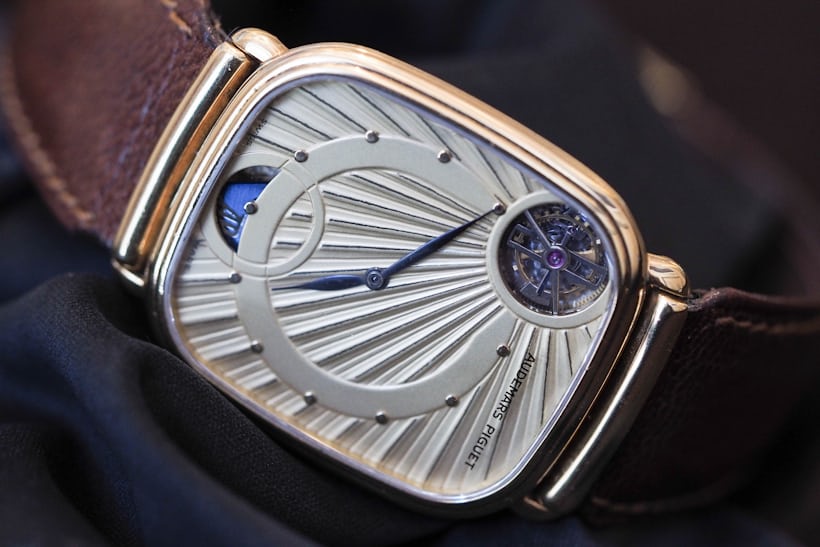
First, let's start with a watch from all the way back in 1986. This is the Audemars Piguet Reference 25643BA with caliber 2870, and it's one of the most important watches in the history of ultra thin watchmaking. In Part 2 of this series, we'd looked at how ultra thin watchmaking had progressed to the point where movement plates and bridges made of traditional materials had gotten as thin as they practically could, and how, in the 1970s and '80s, the firm of Jean Lassale had experimented with the next logical step: you get rid of the traditional plate-and-bridge movement architecture completely, and substitute for it a system where the barrel, wheels, and escapement are inset directly into the plate. The so-called "flying barrel" of a more traditional ultra thin movement – so called because, like a flying tourbillon, it's only supported on one side – is joined by, so to speak, "flying" gears as well (the bridge for the balance pivots is the last remaining concession to conventional movement construction).
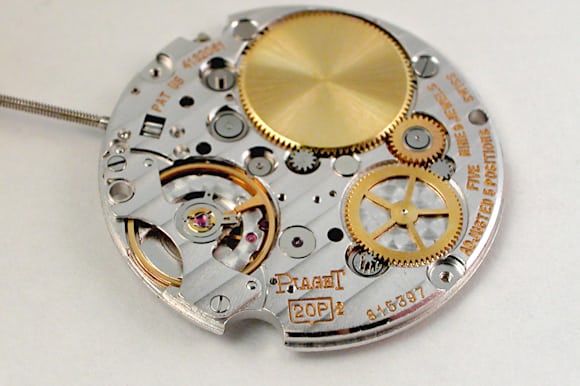
These movements were used by a small group of companies such as Piaget and Vacheron, but their delicacy and the fact that servicing them usually meant just throwing the old movement out and dropping in a new one, made them ultimately unsuccessful. But the idea of reducing watch thickness even further, by eliminating conventional bridge and mainplate construction, was too good to die. In 1986, Audemars Piguet came up with an even more radical idea: make the case of a watch act as the movement plate as well.

Above is an early prototype of the Reference 25643BA. You can see quite a few of its most important features, including the "hammer" style oscilating weight and the miniscule tourbillon (7.2mm x 2.5mm and made of titanium). The real telltale sign that this is a watch of rather revolutionary design, however, comes when you turn the watch over.
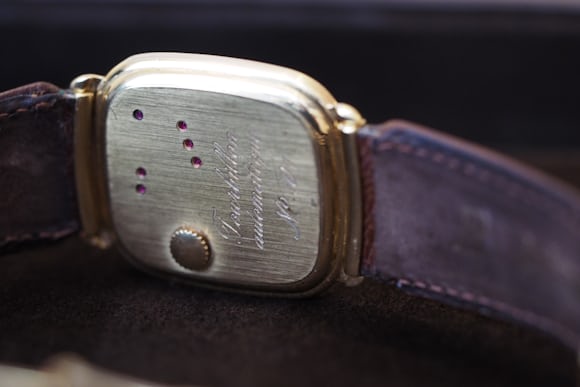
This is the back of Reference 25643BA. The small flat crown can't be used to wind the mainspring; it's just for setting the hands. To wind the watch you have to swing it gently back and forth until it starts to tick. The small red circles you see are actually ruby jewels for the pivots of the gears in the going train, and the result of all this is the thinnest self-winding tourbillon ever made, at only 4.8mm in thickness for the entire watch – a record that holds to this day, just as the Audemars Piguet caliber 2120 remains the world's thinnest full-rotor automatic movement.
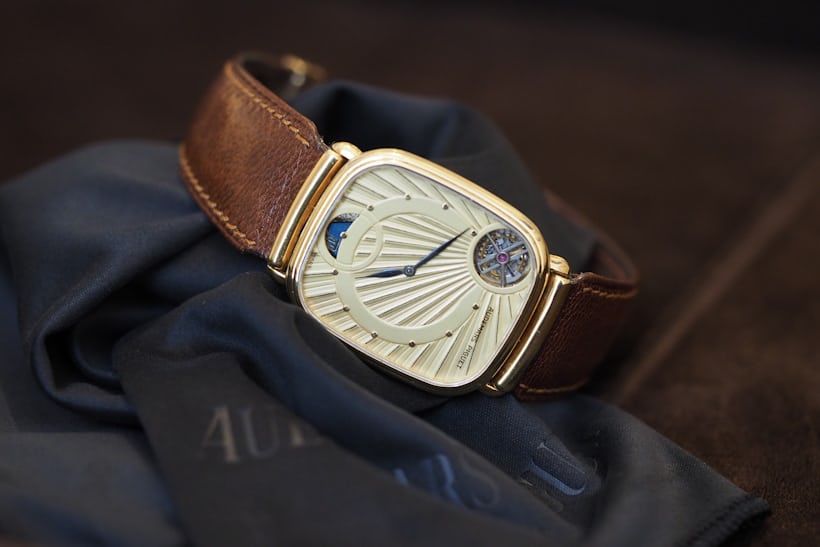
Now one of the most interesting facts about the Reference 25643BA is that the idea of using the case as the movement plate didn't come out of thin air. Reference 25643BA was developed by two engineers: Maurice Grimm and André Beyner, and Grimm had previously developed a little remembered, but rather remarkable ultra thin quartz watch for Omega in 1980: the so-called "Dinosaure" with quartz caliber 1355. The Dinosaure was only 1.42mm thick – that's the entire watch, not just the movement – in which the watch case back was used to support the driving gears for the hands.
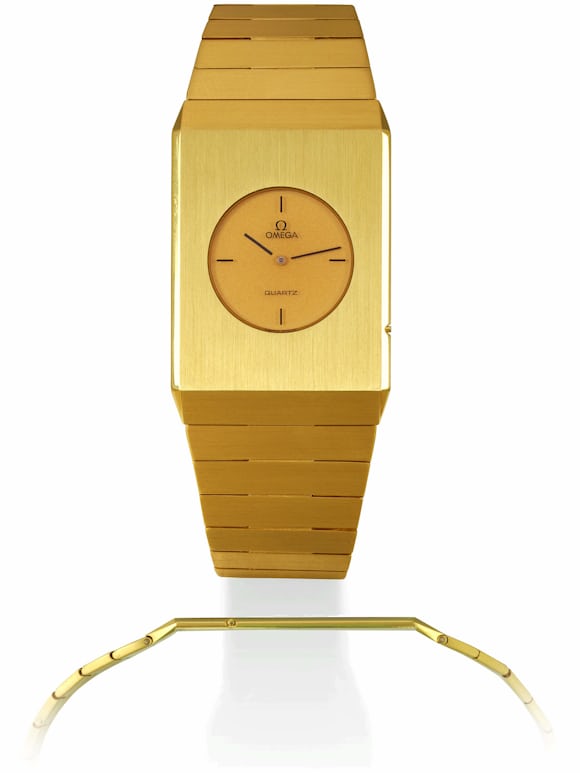
Even more exotically, the hands were printed on transparent disks, making the Dinosaure a mystery watch. Grimm and Beyner would go on to develop the Reference 25643BA at Audemars Piguet, and the Omega Central Tourbillon in 1994. And the concept didn't end its evolution there.
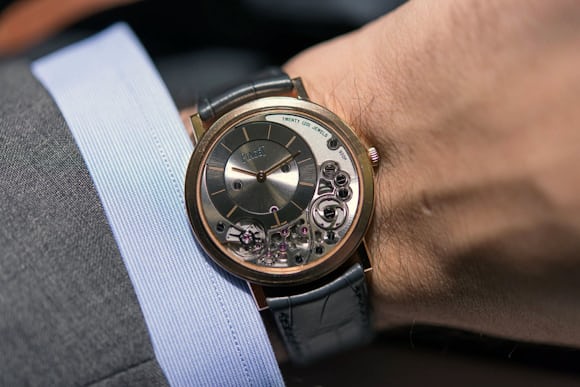
Above is what is currently the thinnest mechanical watch in the world: the Piaget 900P. The 900P set a new record for slimness – 3.65mm thick overall – in 2013 and it has held the record ever since. It achieves that record through the use of the same basic concept pioneered for the Dinosaure in 1980, and refined for the Audemars Piguet Reference 25643BA in 1986: the use of the watch case back as the movement plate. Piaget took the concept even further, however, by moving the bottom pivots entirely inside the watch (there are no visible pivot jewels in the case back) placing the dial on the same level as the going train, and making it possible to both wind and set the watch from the crown. It's hard to overstate what a technical achievement this is – the 900P is much thinner than most watch movements, and yet Piaget manages to squeeze a full 48 hour power reserve out of it. Water resistance is 20 meters.
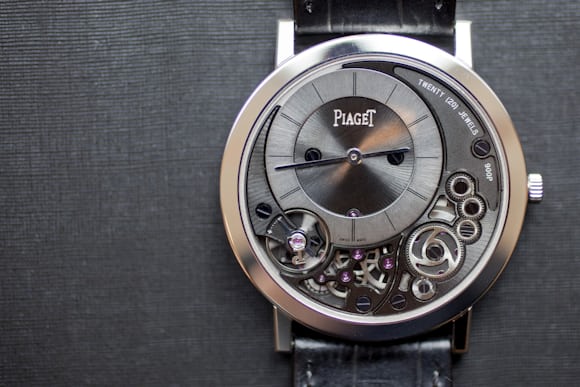
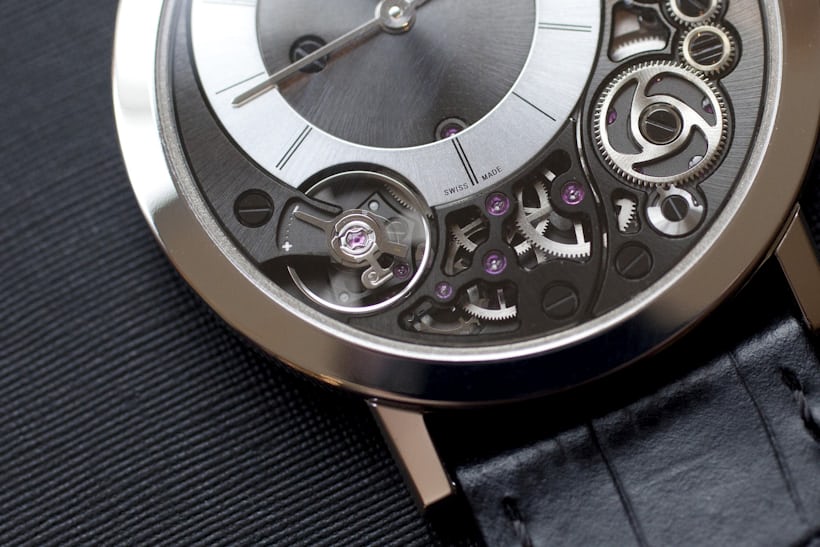
Where do we go from here? The next stages in the evolution of ultra thin mechanical horology will be interesting to see develop, because it's been, even by the incremental standards of the watch industry, an exceedingly incremental game for some time now. Let's not forget that by the opening decades of the 20th century, some of the flattest watches that would ever be made were already being constructed, such as the Jaeger LeCoultre caliber 145 – only 1.38mm thick, and this was in 1907. The use of traditional watchmaking materials will, sooner or later, simply run up against the laws of physics. If you're going to make a case out of steel and a movement plate out of brass and steel, that point is when the normal forces a watch is subject to in daily life become enough to deform those materials enough to stop the watch, and below about a millimeter and a half, in mechanical time-only watches, you seem to get into the zone where the game's not worth the candle. You also get to a point where no matter how good your tolerances are, you simply can't make a thin movement with low enough frictional losses to run for any amount of time, on the energy available from an extremely flat mainspring.
If I had to hazard a guess, however, I'd say that the strategies used in watches like the Dinosaure, Audemars Piguet 25643BA, and even the Lassale calibers – the use of a case as part of the movement plate, the lowering of the dial to the same level as the going train, the use of ball bearings for "flying" gears and barrels – will start to become more ubiquitous, at least in cutting edge ultra thin watchmaking. Microrotors and peripheral rotors are also a standard part of the repertoire of ultra thin watchmaking and we'll very likely see their continued use as well.
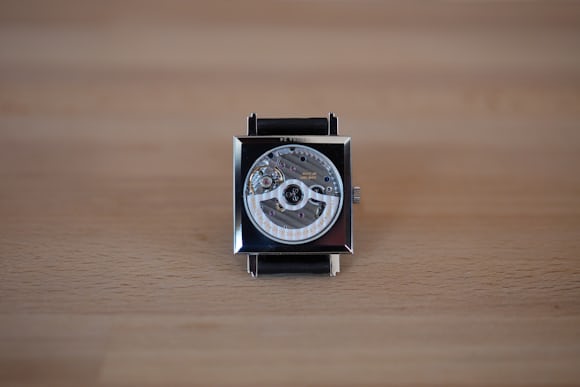
Finally, let's look for a moment at the watch above, and at its movement: this is the rear view of a NOMOS Tetra Neomatik. The movement, DUW 3001, is 3.2mm thick; for comparison, the thinnest full rotor self-winding movement, AP caliber 2120 is (without a seconds hand, and without date) 2.45mm thick. One of the thinnest automatic time-only automatic watches currently produced is the Vacheron Constantin Les Historiques Ultra-Thin 1967. The Les Historiques is overall 5.4mm thick and the NOMOS is a bit thicker, at 6.3mm.
NOMOS doesn't bill the Tetra as, specifically, an ultra thin watch. Yet both the movement, and the watch, are reasonably competitive with what virtually anyone would feel comfortable calling a bona-fide ultra thin watch. DUW 3001, at 3.2mm, is thinner that the ETA 2892 (3.6mm) and much thinner than the ETA 2824 (4.6mm) and less than half as thick as the Rolex caliber 3186, which is 6.40mm thick. All these movements were designed with slightly different priorities, but given the fact that there isn't any universally agreed on definition of what ultra thin actually is (as we've mentioned before, the Berner horological dictionary laconically restricts itself to remarking that an extra flat watch is one that is "unusually flat") it seems clear that ultra thin today is perhaps, not so much about the setting of records. There are certainly those that are interested in how the limits of mechanical horology might be pushed (I'd count myself as one of them) and for those folks, records are to some degree interesting. But for many, maybe most folks who are interested in ultra thin watches, it's not so much an absolute record as a certain kind of experience that makes the genre interesting: an experience of a certain kind of effortless, classical elegance, that has perhaps less to do with numbers, and more to do with excellence in design.
Part One of this series
Part Two of this series
Hands On with the NOMOS Tetra Neomatik
An in-depth look at the Audemars Piguet Reference 25643BA
A remarkable ultra thin Jaeger LeCoultre complicated movement from 1910.
No comments:
Post a Comment